Over the years, there have been many instances of microtext being used on banknotes as a security measure, in an attempt to make them more difficult to counterfeit.
More interestingly, perhaps, it was revealed last year that the Bank of England has recently taken a Willy Wonka-esque, golden ticket approach to releasing their new five pound notes. They've selected just four fivers to be engraved with a micro-image by esteemed micro-artist Graham Short.
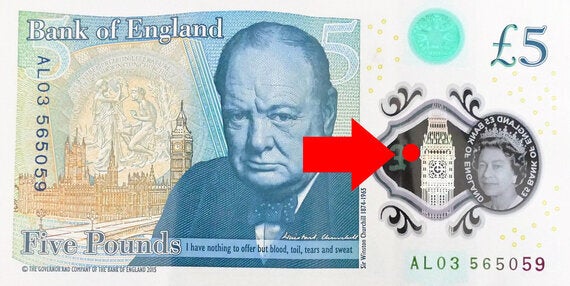
Each of the four notes features a tiny portrait of Jane Austen in the fiver's transparent window (roughly the size and location of the red dot shown above), and a different quote from one of her novels (you can see an example of one of the images at the top of this BBC article). Here are the quotes alongside the banknotes' corresponding serial numbers:
AM32 885551: "If I loved you less, I might be able to talk about it more," from Emma
AM32 885552: "To be fond of dancing was a certain step towards falling in love," from Pride and Prejudice
AM32 885553: "A large income is the best recipe for happiness I ever heard of," from Mansfield Park
AM32 885554: "I hope I never ridicule what is wise or good," from Pride and Prejudice
The third quote is perhaps the most appropriate, given that the four special editions have been valued at £50,000 each - the typical insurance value of micro-art by Graham Short. And so far, only two of the four have been found - one spent in a South Wales café, the other enclosed in a Christmas card by someone who is either unfathomably generous or spent the rest of the festive period kicking themselves senseless.
Inspired by this news, the team at freemarket decided to look back at other examples of hidden text in currency. What we found was no less surprising. While the new fiver boasts a miniscule feat of pageantry, the US $500 bill incorporates micro-text as a security measure, unobtrusively embedded in the wavy lines that constitute Benjamin Franklin's collar in a way that might never be noticed were you not looking for it.
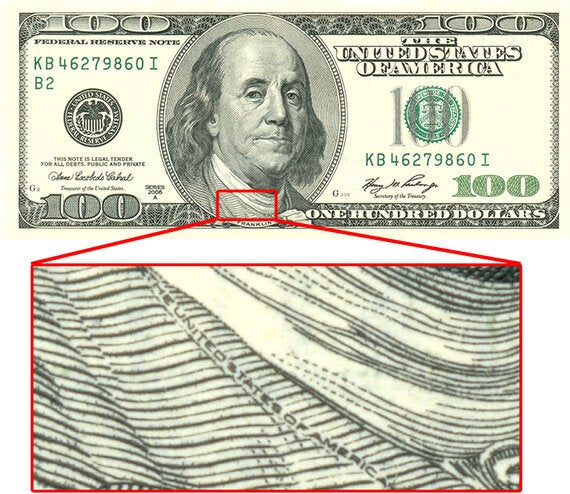
A somewhat more incendiary example, however, would be the Seychelles 50 rupee banknote that was issued between 1968 and 1973. See if you can spot the hidden message.
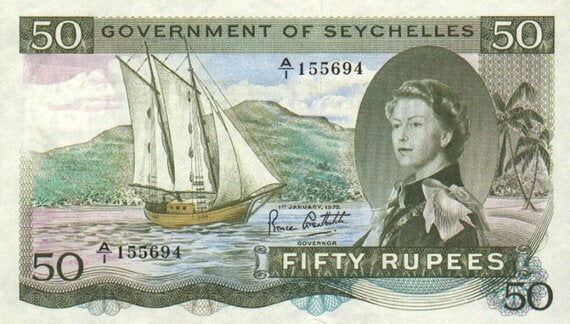
Courtesy of Banknote World
Still not seeing it? Take a closer look at those saucy palm trees.
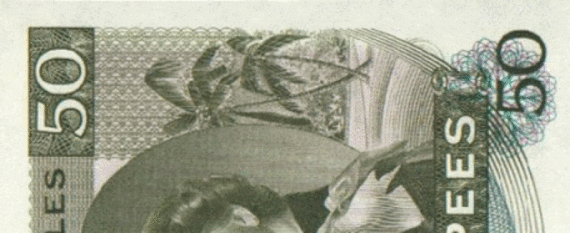
Phwoar! What's going on here then?! One theory is that a rogue banknote designer was making an impolite statement about the slow grind towards Seychellois independence from the UK by attempting to humiliate the Queen with one of the raunchiest words in the English language. That the Seychelles' bid for independence began in 1964 and was completed in 1976 gives a convincing time frame for this version of events.
Nevertheless, others claim that this apparent affront to Her Majesty is merely an anomaly in the design process - albeit one that has made these particular banknotes highly sought-after collectors items. However, the possibility that the 'SEX' note was an anomaly becomes slightly harder to entertain given that the 10 rupee note below was also in circulation around the same time.
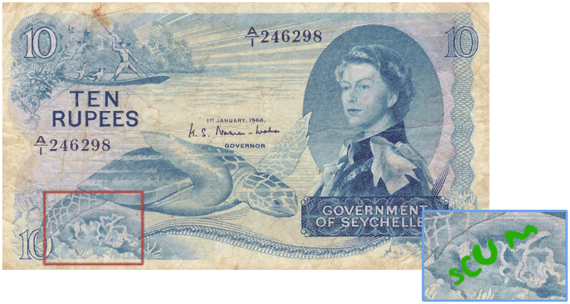
Courtesy of Realbanknotes.com
It's interesting to note that hidden messages on banknotes tend to increase the value of money dramatically, whereas hidden fees from banks on currency exchanges and international payments have precisely the opposite effect.
